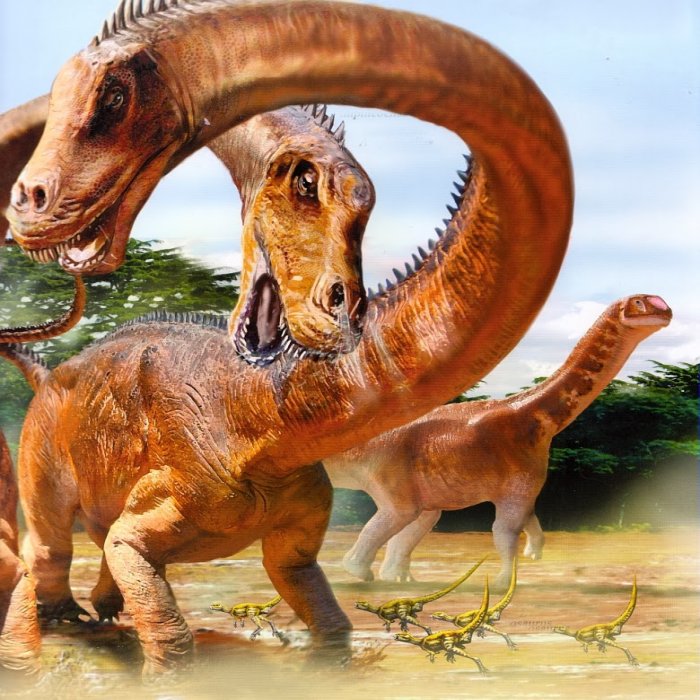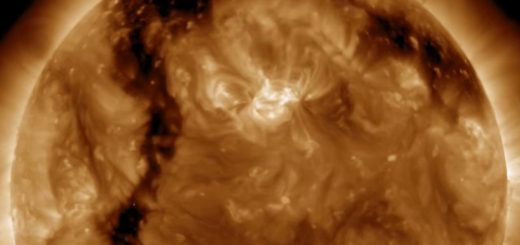Rapid Migration Of Dinosaurs Across The Globe May Have Contributed To Their Own Demise
For the first time, scientists reveal the paths taken by the dinosaurs as they expanded out of South America during their rise to world dominance.
The research conducted by a team from University of Reading shows that the speed of this expansion meant that the dinosaurs quickly became cosmopolitan and subsequently ran out of land. This lack of space then seriously impeded their ability to produce new species.

“Fossil evidence has shown us where the dinosaurs started out and where they died, but there is an important middle period that little was known about. Our research fills this gap in prehistory by revealing how the dinosaurs spread, how fast they moved and what directions they moved in through time,” Ciara O’Donovan, evolutionary biologist at the University of Reading and lead author of the study, said in a press release.
“The dinosaurs exploded out of South America in a frenzy of movement to cover the planet. It was during this time that diverse forms evolved and eventually led to species such as the fearsome Tyrannosaurus rex, Archaeopteryx (the earliest bird) and the gigantic, long necked Diplodocus. This honeymoon period could not last forever though, and the dinosaurs eventually filled every available habitat on Earth.
“There was nowhere new for species to move to, which may have prevented new species from arising, contributing to the dinosaurs’ pre-asteroid decline. In essence, they were perhaps too successful for their own good.”
Previous study that revealed the dinosaurs were in decline as a species 50 million years before the asteroid strike that finally wiped them out. Fossil evidence shows dinosaurs originated in the late Triassic Period (around 230 million years ago) in South America, which was then part of the huge land mass called Pangea.
rapid migration of dinosaurs
This closely followed the world’s largest extinction event that wiped out almost all of life on Earth.
Using a new, statistical method to uncover where every dinosaur species’ ancestors existed, in three dimensional space, on the globe, the team was able to demonstrate that the dinosaurs spread unchecked across the huge available space, at a rate of 1,000km/million years. They dominated every terrestrial habitat, across all the continents as they drifted apart, over the course of 170 million years.
This saturation of the Earth caused the dinosaurs to become increasingly specialized to live in their existing environment, resulting in a fundamental change in the way they evolved and produced new species. This curbed their progress and left them vulnerable to future changes in the environment, such as those caused by the asteroid strike.
Dr. Chris Venditti, evolutionary biologist at the University of Reading and co-author of the paper, said: “Early dinosaurs had a blank canvas and spread quickly across the devastated Earth, taking up every opportunity in their path. Virtually every door was open to them as there was no competition from other species.
“The inability of the dinosaurs to adapt rapidly enough as the Earth became full may explain why they were in decline prior to the asteroid strike, and why they were so susceptible to almost total extinction when it hit.”



 Creators of mankind
Creators of mankind Description of “Tall white aliens”
Description of “Tall white aliens” Where they came from?
Where they came from? About hostile civilizations
About hostile civilizations The war for the Earth
The war for the Earth “Tall white aliens” about eternal life
“Tall white aliens” about eternal life Video: “Nordic aliens”
Video: “Nordic aliens” Aliens
Aliens Alien encounters
Alien encounters The aliens base
The aliens base UFO
UFO Technology UFO
Technology UFO Underground civilization
Underground civilization Ancient alien artifacts
Ancient alien artifacts Military and UFO
Military and UFO Mysteries and hypotheses
Mysteries and hypotheses Scientific facts
Scientific facts


















